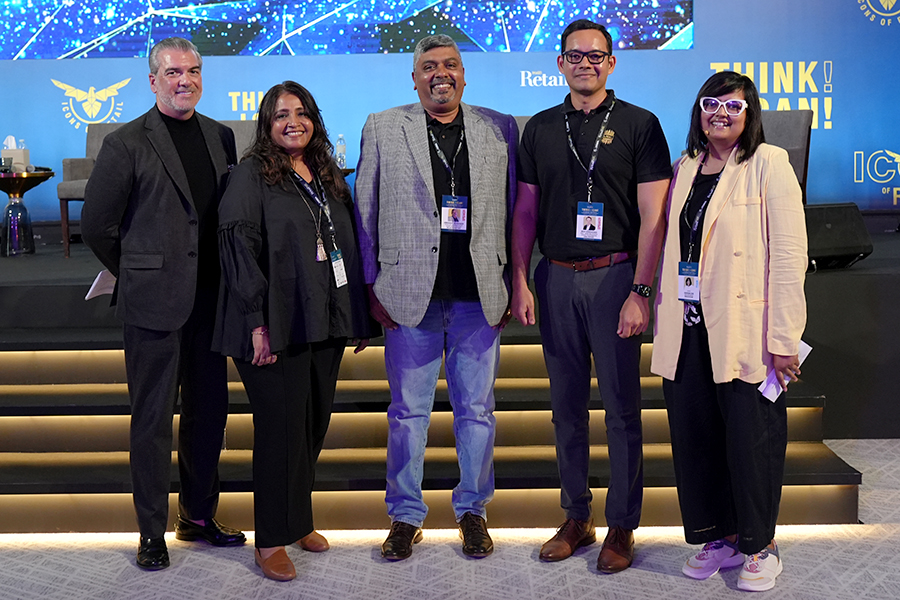
Decoding the complex future of retail
“Is there a word that comes to your mind when you think of Gen Z,” asked Anurima Das, Executive Editor, IMAGES RetailME in her opening comments at the THINK! I CAN! conference for a session that focused on decoding what seems like a complex future for retail.
“Having one Millennial and one Gen Z as children who are a decade apart in age with very different mindset, belief sets and shopping behaviours, one word that I’d use to describe them is fickle,” responded Mark Tesseyman, CEO, LIWA Trading Enterprises.
Adding on, Anamika Priyadarshi, Head of Marketing, Jashanmal said, “If you asked me to describe a Millennial or a Gen Z, I would say experiential. They are suckers for experience.”
“I’d describe Gen Z as fluid,” said Amardeep Devadason, Head, Global Brand Solutions APAC, RRD GO Creative. “Their attention tends to move from one point to another very quickly, which is a challenge for a brand because first they have to attract the attention of a Gen Z, which is tough and then retain it, which is nearly impossible.”
“The word that comes to my mind when I think of Gen Z is conscious. They care about inclusivity, diversity, sustainability. As brands we really need to reinvent ourselves to be more conscious while engaging with the Gen Z cohort,” observed Anup Kondakundi, Head – Marketing Strategy & Brand Transformation, Ajmal Perfumes.
So, how are you solving this challenge, Das asked.
“As a brand, we’ve been around for over seven decades, and for the first time ever, we are currently amid a brand transformation journey,” Kondakundi responded. “For instance, Gen Zs are digital natives and very conscious so we’re at that juncture where we are trying to develop the right strategy to communicate our legacy and brand story with them clearly and authentically.”
“We are over a century old brand; we see families who have shopped with us over generations. However, now the Millennials and Gen Zs from these families are undecided or fluid and are keen to experiment more before shopping with us. That made us think aloud, which led to redesigned stores which are modernised and experiential,” Priyadarshi shared.
Agreeing with Priyadarshi, Tesseyman said, “We used to be a traditional franchise or franchisee business. Since COVID, we changed our business model completely. Now in about 65% of the units we sell our own labels, one of which is a lingerie brand Isla & Evie, running now for about 18 months and it’s a $12 million business already. A brand targeted at Gen Z that constitute 32% of the global population with $2.3 trillion of spending power which will grow. They will start to spend more money, but you need to engage with them in a particular way.”
“Now there’s a problem with them. Gen Z is being called the most depressed generation, prone to anxiety because they worry about everything, so nothing’s perfect. And here’s the thing, 50% of our total sales as a group come from our database and interestingly 36% of that 50% comes from Gen Z. So, resonating with Gen Z is a big win for us but we had to think of ways to engage with them – by offering sustainable brands, seamless shopping experience and engaging content, among others,” he added.
“I think ultimately it all boils down to brand storytelling and creating those moments of impact because with the short attention span and with zero patience, as Mark mentioned, it’s important for us to understand that storytelling is no longer linear. The purpose driven; value-oriented Gen Z will not buy from brands that they don’t identify with. Hence, brand storytelling has got to be personalised, for which you’ve got to leverage technology. Some of the best Gen Z brands around the world speak a certain language – moving away from product launches, they talk about ‘drops’ creating a community factor. The focus is shifting from influencer marketing to stakeholder marketing, and all that boils down to communities. Brands that can hit the right chord will be relevant,” Devadason stated.